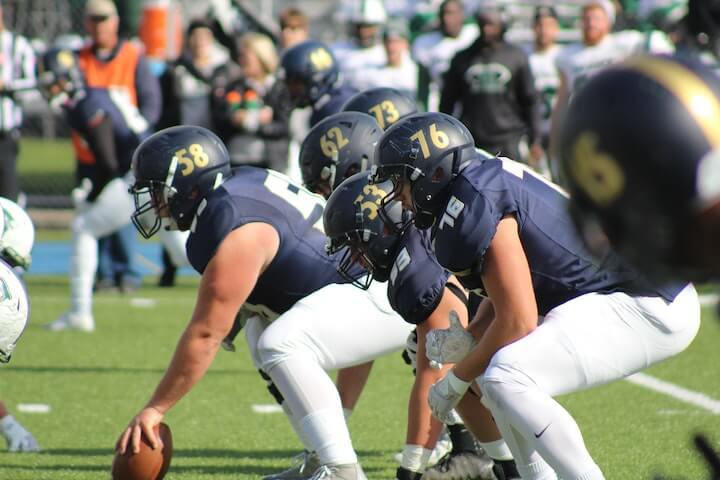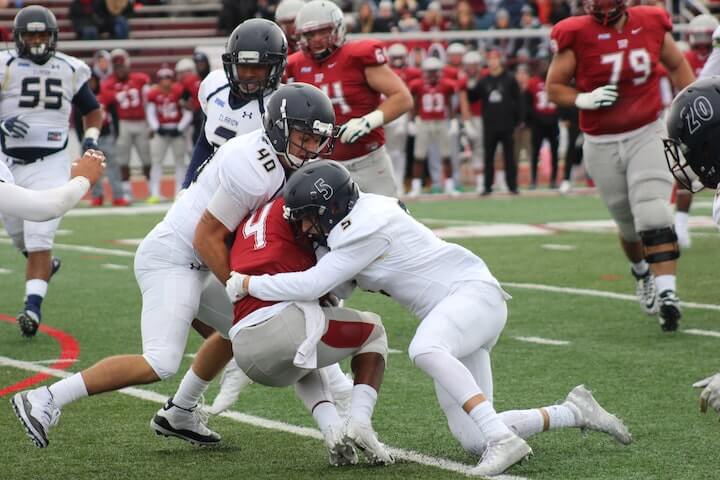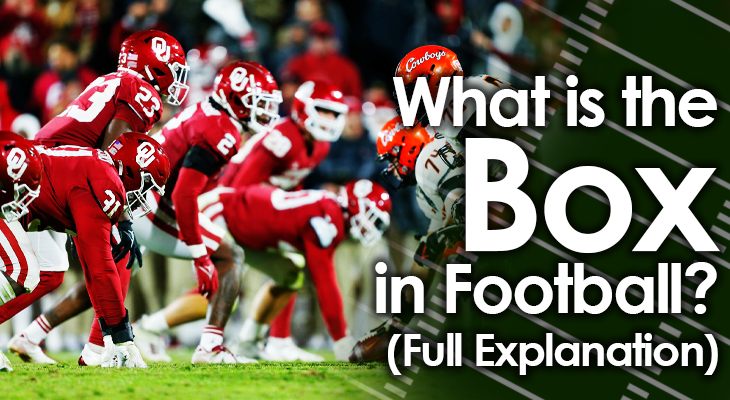There are many different football terms used to signify areas of the field.
You may have heard some of these terms, such as:
- The "Slot"
- The "Pocket"
- The "Box"
The "Box" is often used in conjunction with describing how the defense lines up on a particular play.
For example, you may hear football announcers say that a defense has eight men lined up in the box, or that they're stacking extra players in the box during certain situations.
Below, we'll dive further into what the box in football is as well as how it comes into play during games.
What is The Box in Football?
The Box in football is an imaginary area of the field determined by where the line of scrimmage is on a particular play.
The Box starts from the line of scrimmage and extends about 3-5 yards depth-wise and is as wide as the offensive line.
The width of the box is determined by all players on the offensive line for that particular play.
So if there are two tight ends on the field, it will extend to the outer shoulder of each tight end. If there are no tight ends on the field, it'll extend to the outer shoulder of the last player on the offensive line on each side of the center.
The box will always be a rectangle, since it'll be wider than it is deep.

How Offenses Use the Box
Offensive coaches and players use the box to quickly determine what alignment the defense is in.
Coaches will look to see how many defenders are lined up in the box to determine whether the defense is loading up against a potential running play, or whether they might be blitzing extra defenders, for instance.
In most cases, all defensive linemen and linebackers will be within the box before the play begins.
Coaches and players can look at the box while the quarterback goes through his cadence to determine what they might be up against.
If there are extra players in the box -- such as a safety -- then it's possible the defense is bringing extra "heat" up the middle on that play.
If there are fewer defenders in the box -- i.e., two linebackers and an extra cornerback -- then the defense might cover a passing play.
The offense can use this information to make adjustments on the fly.
They can call audibles into and out of running plays, for example, if there are fewer or more defenders in the box, respectively.
How Defenses Use the Box
Defenses won't use the box in the same way offenses will.
While the offense looks at players lined up in the box and make determinations about whether to audible into and out of certain plays, defenses will work in the opposite way.
The defense will try to predict what play the offense will most likely run, and then put certain players in the box based on those predictions.
For example, if the defense believes the offense will attempt a running play right up the middle, then they may stack more players in the box to try to provide extra run support.
This is referred to as the defense "stacking the box" - which they'll often do on obvious running situations. This includes short-yardage situations such as third-and-short, goal-line situations, or when the offense might just be trying to run out the clock toward the end of a game.
Conversely, the defense may move players out of the box in more obvious passing situations.
If it's third-and-long or if the offense needs to score a lot of points to come from behind, then it's more likely that they'll pass the ball.
The defense, then, will respond by putting FEWER players in the box to cover the receivers.

Conclusion
The box in football is an imaginary rectangle drawn about 3-5 yards beyond the line of scrimmage and extends to the width of the offensive line on every play.
Offenses use the box to quickly determine what alignment the defense is in and whether they should call an audible.
Defenses will either stack the box or put fewer players in the box before a play based on what they believe the offense will run on that upcoming down.

